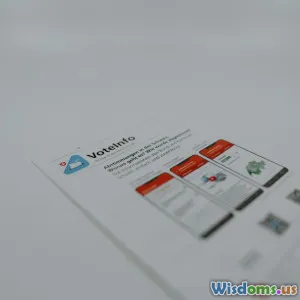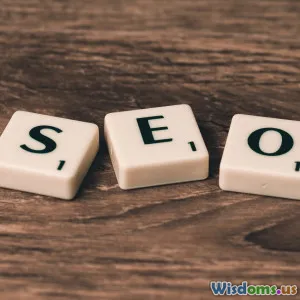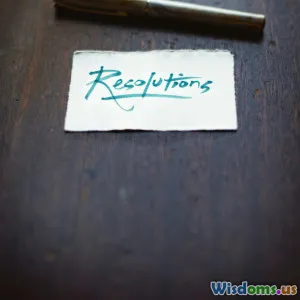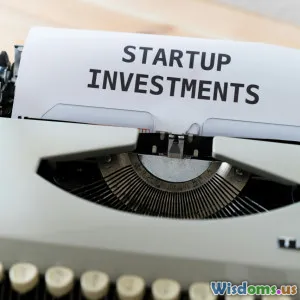
SelfPublishing Success What Indie Authors Can Learn from Bestsellers
8 min read Discover key strategies indie authors can adopt from bestseller habits to boost self-publishing success. (0 Reviews)
Self-Publishing Success: What Indie Authors Can Learn from Bestsellers
In today’s rapidly evolving literary landscape, self-publishing has grown beyond a niche avenue into a formidable platform capable of launching bestsellers. Indie authors now have unprecedented access to tools, markets, and communities that allow them to bring their stories to life and directly connect with readers. Yet, despite this accessibility, truly breaking through the noise and achieving bestseller status remains elusive for many. What separates bestselling authors from the masses? More importantly, what can indie authors glean from these successes to pave a stronger path on their own journey?
This article dives deep into the real-world strategies, mindset shifts, and actionable insights derived from bestselling authors' journeys, aiming to equip indie writers with knowledge that transforms ambition into measurable success.
Understanding the Bestseller Phenomenon
Before dissecting tactics, it’s crucial to define what a “bestseller” really means. Bestseller lists such as the New York Times, Amazon Top 100, or USA Today spotlight books that achieve high sales velocity over a short period. However, success isn’t solely about sheer volume of sales — factors like sustained reader engagement, strategic marketing, and niche mastery often play decisive roles.
Take, for example, The Martian by Andy Weir. Initially self-published as a serial online, it caught widespread attention through a combination of scientific credibility and compelling narrative, which blossomed into a traditional publishing deal and blockbuster film. Weir’s story reflects how strong content paired with smart positioning can lead to bestseller status.
Key Lessons Indie Authors Can Learn from Bestselling Authors
1. Mastering Your Niche with Laser Precision
Bestsellers often thrive by targeting and dominating a well-defined niche rather than trying to appeal to everyone. For indie authors, specializing in a niche—from cozy mystery or epic fantasy to personal growth nonfiction—helps build a loyal, focused reader base.
For instance, Amanda Hocking specialized in paranormal romance and urban fantasy, quickly becoming one of the fastest-selling indie authors by embracing the tastes and expectations of her audience without dilution.
Actionable Tip: Conduct market research using platforms like Goodreads and Amazon categories to identify under-served, passionate reader communities and tailor your book’s voice and branding accordingly.
2. Investing Heavily in Professional Presentation
One common thread with bestselling self-published authors is the uncompromising quality of their product. Successful indie authors invest in professional editing, compelling cover design, and clean formatting.
Data shows that books with professional covers and reviews sell significantly better on Amazon’s platform due to heightened perceived value. Joel Friedlander, a renowned self-publishing expert, emphasizes, "You must invest as much in packaging as you invest in writing."
Actionable Tip: Allocate budget early for editorial services and cover creation — the upfront cost yields higher conversion during browsing.
3. Building an Engaged Author Platform
Bestsellers are not just books; they are brands. Authors like Hugh Howey and Mark Dawson have leveraged robust websites, email lists, and social media channels to maintain sustained conversations with readers.
A directed mailing list remains the most reliable sales pipeline. As Dawson explains, “Your mailing list is your real asset, long after the Amazon algorithms change.”
Actionable Tip: Start cultivating an email list by offering a newsletter or freebies related to your book’s niche. Use content marketing to familiarize readers with your voice beyond the book.
4. Leveraging Data and Iteration
Top indie authors monitor their sales data, reader metrics, and marketing efficacy in near real-time and adapt strategies quickly. They conduct A/B testing on pricing, book descriptions, and ad campaigns to discover what resonates best.
Data-driven decision making helped authors like Bella Andre optimize Amazon advertising campaigns, dramatically boosting sales.
Actionable Tip: Utilize Amazon Author Central, KDP reports, and advertising analytics to continually refine your outreach. Don’t hesitate to experiment with different promotional tactics.
5. Consistency and Momentum in Releases
Successful self-published authors frequently release multiple titles or series with a defined tempo. This approach builds momentum and keeps readers engaged. The principle is simple: frequent releases help with an author’s visibility and algorithmic favor.
Authors like James Patterson exemplify this at scale, but even indie writers see benefits by planning series rather than standalone “one-hit wonders.”
Actionable Tip: Plan your writing and publishing schedule to deliver at least one new product annually, preferably more for series, balancing quality with consistency.
Debunking Myths: The Bestseller Journey Is Not Overnight
Many new authors expect rapid viral success. The truth is, bestsellers usually arise from savvy marketing, community-building, resilience, and iterative improvement over months or years. For example, Hugh Howey spent years perfecting his Wool series before breakthrough.
Indie success is a marathon, not a sprint. Embarking on the journey prepared to learn from feedback and iterate systematically is vital.
Conclusion: Charting Your Own Bestseller Path
In essence, indie authors need not reinvent the wheel but rather adopt proven bestseller traits: clear niche targeting, professional quality, platform building, data utilization, and consistent output.
The stories behind self-publishing successes are rich with strategic thinking, persistence, and relationship-building. By emulating these habits and reframing writing as both creative and entrepreneurial, any dedicated indie author can significantly improve their chances of joining the ranks of recognized bestsellers.
Remember, your voice matters—unleash it with preparation, strategy, and passion.
References:
- Hocking, A. (n.d.). My Indie Author Journey.
- Friedlander, J. (2020). The Self-Publisher's Ultimate Resource Guide.
- Howey, H. (n.d.). About Wool Series.
- Dawson, M. (2018). Email Marketing for Authors.
- Weir, A. (2014). The Martian.
- Andre, B. (2015). Marketing Self-Published Books on Amazon.
Rate the Post
User Reviews
Popular Posts





















